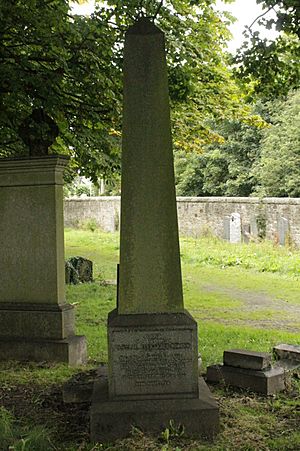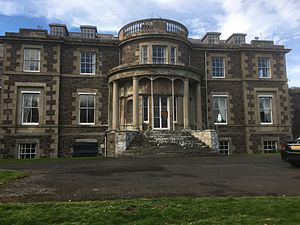Alexander Duncan (army officer) facts for kids
General Alexander Duncan (1780–1859) was a Scottish general who served in the East India Company army in Bengal, India. He spent many years in India, rising through the ranks to become a high-ranking officer.
Contents
Early Life and Start in India
Alexander Duncan was born in Scotland in 1780. His father, Andrew Duncan, was a well-known doctor and a professor at Edinburgh University. Alexander grew up in Edinburgh and went to Edinburgh High School.
When he was about 15 years old, in 1795, Alexander traveled to India. He joined the East India Company's army as a young cadet. He served in India for a very long time, until 1840. By then, he had become a Major-General.
Military Career in India
Alexander Duncan was involved in many important military actions during his time in India. The East India Company was a powerful British trading company that also had its own army to control large parts of India.
Early Campaigns and Promotions
In 1800, Duncan served in an area called Awadh. He also took part in battles in the Doab region, including at Sasni and Bijai Garh.
He played a role in the Second Anglo-Maratha War, which was a conflict between the British East India Company and the Maratha Empire. He was present at the Battle of Laswari. In 1805, he was promoted to captain.
From 1806, Duncan worked as a brigade major in Fatehgarh. A brigade major is an officer who helps manage a military brigade. In 1812, he was active in the Bundelkhand Agency and served at Kalinjar Fort. By 1815, he was given command of a unit called the 1/2 Bengal Native Infantry in Awadh.
Third Anglo-Maratha War
Duncan continued to command the Bengal Native Infantry during the Third Anglo-Maratha War (1817–1818). His unit was part of a larger force called the Narbada Field Force.
He was praised for his actions in a battle at Sohagpur in 1819. A high-ranking British official named Sir Richard Jenkins commended him for his bravery and leadership.
Later Commands and Afghan War
In 1824, Duncan was put in charge of the 5th Bombay Native Infantry. Later, in 1828, he commanded the Malwa Field Force. He was then promoted to Colonel.
General Duncan also played a part in the early stages of the First Anglo-Afghan War. He was a general leading one of the two main divisions of the Army of the Indus. This army was under the command of Sir Henry Fane.
When the campaign started, Duncan commanded the reserve division at Firozpur. While most of the army marched through a difficult mountain pass called the Bolan Pass, Duncan's division stayed behind. Their job was to protect the supply lines and forces in Sindh. After the Afghan campaign ended, Duncan's long service in India came to a close.
Life After India
After returning from India, General Duncan first settled in Edinburgh, Scotland, near his family. He lived at 13 Abercromby Place in the city's New Town.
He continued to receive promotions even after retiring. He became a Lieutenant-General in 1846 and then a full General in 1854. In the 1850s, he lived at Gattonside House, near Melrose.
General Alexander Duncan passed away at Gattonside House on May 14, 1859. He is buried in Warriston Cemetery in north Edinburgh.
Family Life
General Duncan was married to Mary Mabel, who died in 1857. They had a large family with seven sons and five daughters.
- Their eldest daughter, Jane Alexandrina, married Patrick Dudgeon in 1822.
- Their second daughter, Elizabeth Mary, married Windsor Parker in 1830.
- Their third daughter, Frances Gertrude, married William Erskine Baker in 1837.
One of their sons, John Æneas Duncan, also served in the military. Their youngest son, William Toome Duncan, sadly passed away at the young age of 18 in 1837.



